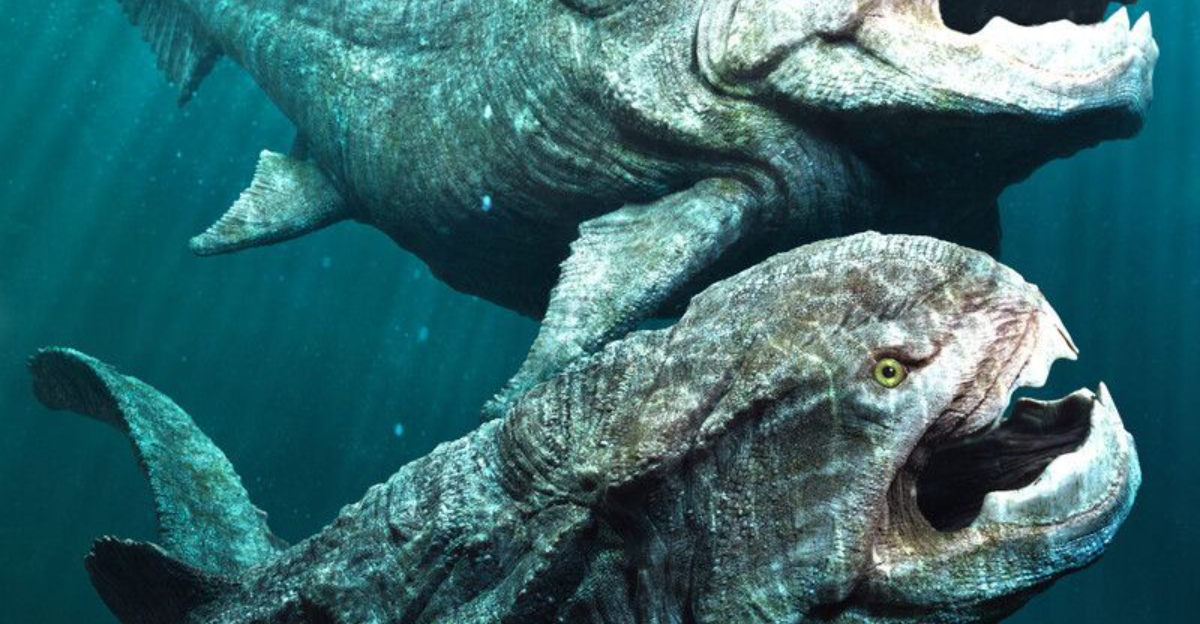When we think of terrifying prehistoric creatures, dinosaurs often come to mind. However, long before the reign of the dinosaurs, the Earth was home to even more fearsome beasts.
These ancient predators were larger, more dangerous, and scarier than the dinosaurs we know. Today, we will explore such ferocious animals, each with its own unique set of terrifying features that make them stand out in the history of our planet.
1. Megalodon
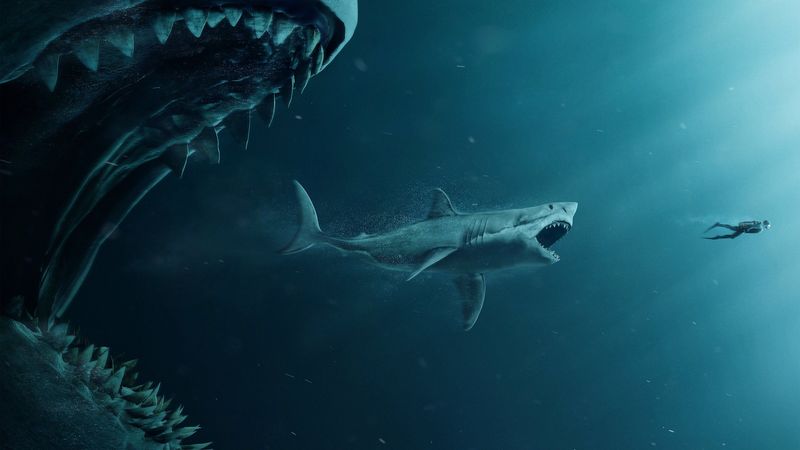
The Megalodon was a colossal shark, dwarfing even the great white shark of today. Measuring up to 60 feet in length, it was arguably the most formidable predator of its time. Its massive jaws, filled with rows of serrated teeth, could easily crush bones and shells.
The oceans were its hunting ground, where it preyed on large marine mammals. Scientists believe the Megalodon’s bite was ten times more powerful than that of a T-Rex, making it a master of the seas. Its terrifying presence ensured that it was at the top of the food chain.
The Megalodon’s extinction remains a mystery, but its legacy lives on in fossils and the remains found in ocean sediments. While dinosaurs roamed the land, the Megalodon ruled the oceans with an iron fin, leaving a legacy that still captures our imaginations today.
2. Titanoboa
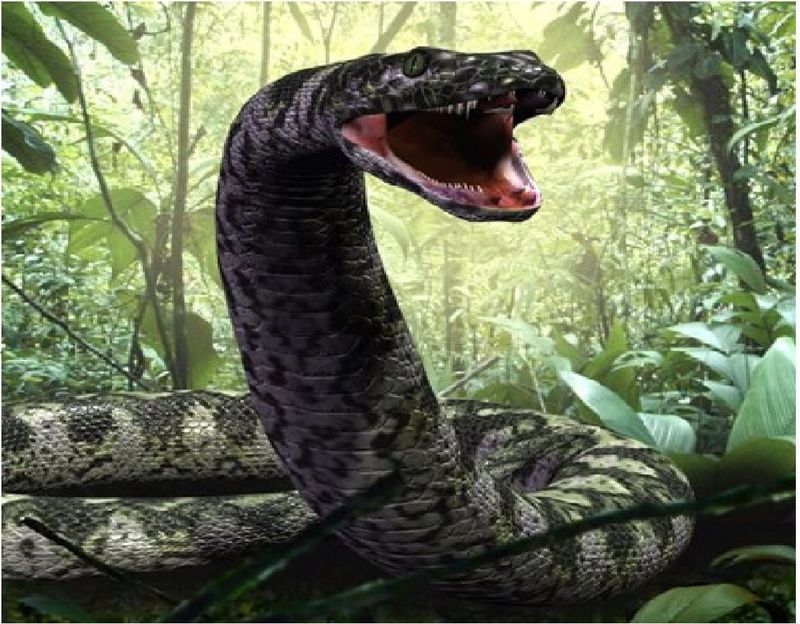
Imagine a snake so large it could swallow a crocodile whole. That’s precisely what the Titanoboa was—an enormous serpent that thrived in the warm, swampy regions of ancient South America. Measuring over 40 feet in length, it was the largest snake to have ever existed.
The Titanoboa’s impressive size allowed it to be an ambush predator, lying in wait for its prey to come near. Once within reach, it would strike with incredible speed and strength, constricting its prey with its powerful muscles. This prehistoric giant was an apex predator in its environment.
Its diet likely consisted of large fish and other sizable creatures that shared its habitat. The discovery of Titanoboa fossils has provided valuable insights into the climate and ecosystems of its time, offering a glimpse into the terrifying beauty of our planet’s past.
3. Arthropleura
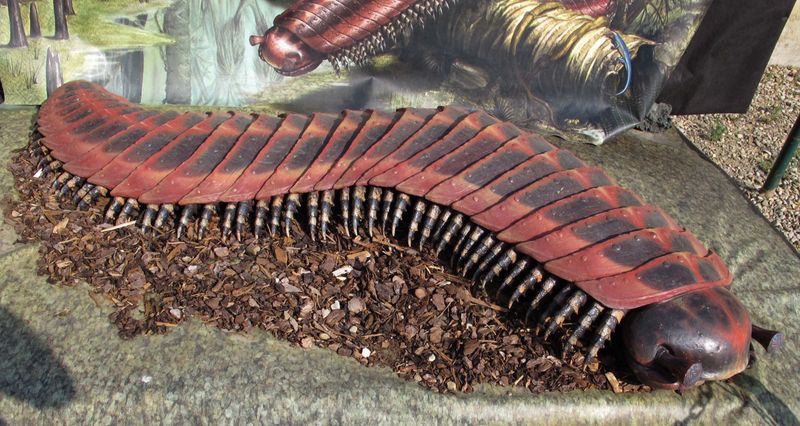
Arthropleura was a massive arthropod, resembling a giant millipede, that roamed the Earth during the Carboniferous period.
With a length of over 8 feet, it holds the record for the largest land-dwelling arthropod in history. Its many legs moved in coordinated waves, allowing it to traverse the dense forests with ease.
Despite its frightening appearance, Arthropleura was likely herbivorous, feeding on the abundant vegetation of the time.
Its sheer size, however, would have made it an intimidating presence in any prehistoric landscape. The segmented exoskeleton provided protection and support as it moved through its environment.
The extinction of Arthropleura is thought to be linked to the reduction of oxygen levels in the atmosphere.
4. Helicoprion
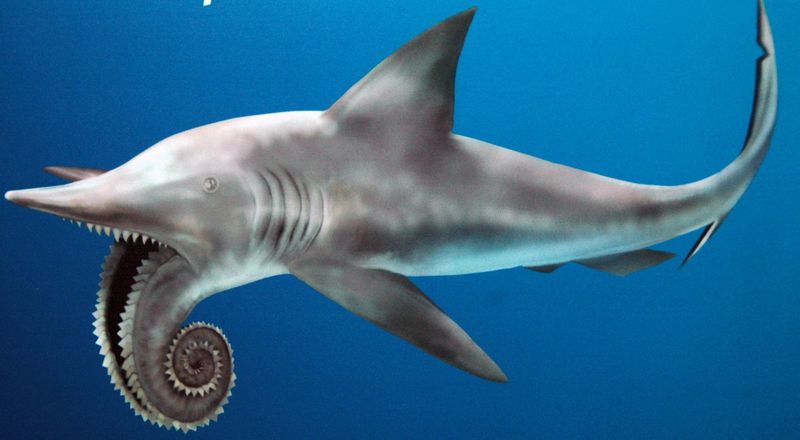
Helicoprion was a bizarre and fascinating creature from the Permian period, known for its unique spiral saw-like jaw. Unlike any animal alive today, its lower jaw featured a whorl of serrated teeth, which it used to catch and consume prey with precision.
Swimming in the ancient oceans, Helicoprion’s odd dental structure has baffled scientists for years. The function and evolution of its spiral teeth remain topics of debate among paleontologists. It is believed to have preyed on soft-bodied marine animals, slicing them with ease.
The peculiar jaw of the Helicoprion has made it an icon in the study of prehistoric marine life. Its enigmatic existence serves as a reminder of the many unknowns that still lurk in Earth’s history and the continuous quest for understanding the planet’s ancient life forms.
5. Dunkleosteus
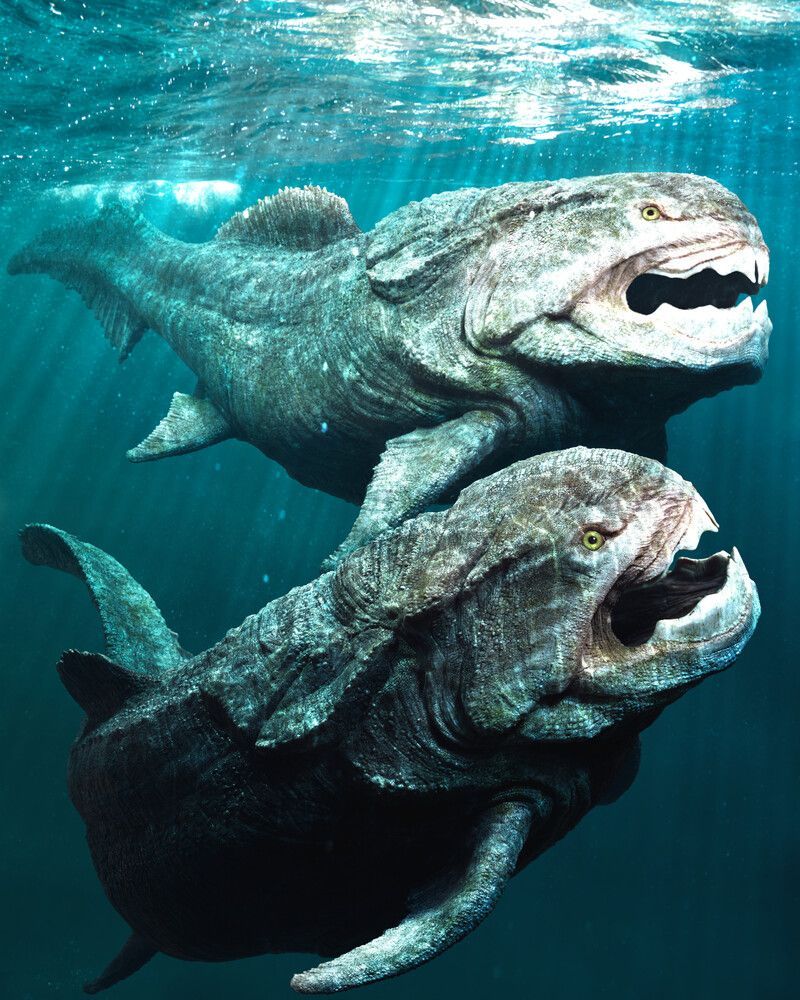
Dunkleosteus was a prehistoric fish that prowled the Devonian seas, known for its formidable armored head and razor-sharp fangs.
This ancient predator could grow up to 33 feet long, making it one of the largest and most fearsome fish of its time.
Its powerful jaws could snap shut with an incredible force, allowing it to crush and consume its prey with ease.
Dunkleosteus was a top predator, dominating the marine ecosystem with its aggressive hunting strategies and fearsome appearance.
Despite its ferocity, Dunkleosteus left behind a fascinating fossil record, providing insights into the evolution of early vertebrates.
6. Gorgonops
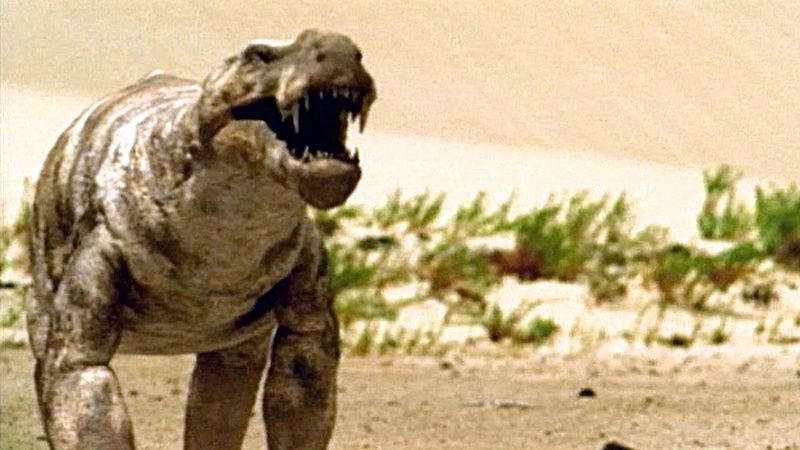
Gorgonops was a fierce predator from the Permian period, recognized for its saber-like canine teeth. With a body resembling a cross between a reptile and a mammal, it was a top carnivore in its ecosystem, preying on herbivorous creatures of its time.
Measuring up to 10 feet in length, Gorgonops had a robust build and powerful limbs, allowing it to chase down and overpower its prey. Its fearsome appearance was matched by its predatory prowess, making it a dominant force in the prehistoric landscape.
The extinction of Gorgonops coincided with the Permian-Triassic extinction event, which wiped out much of Earth’s biodiversity. Despite its demise, Gorgonops continues to captivate paleontologists and enthusiasts alike, offering a glimpse into the fierce world of ancient predators.
7. Therizinosaurus
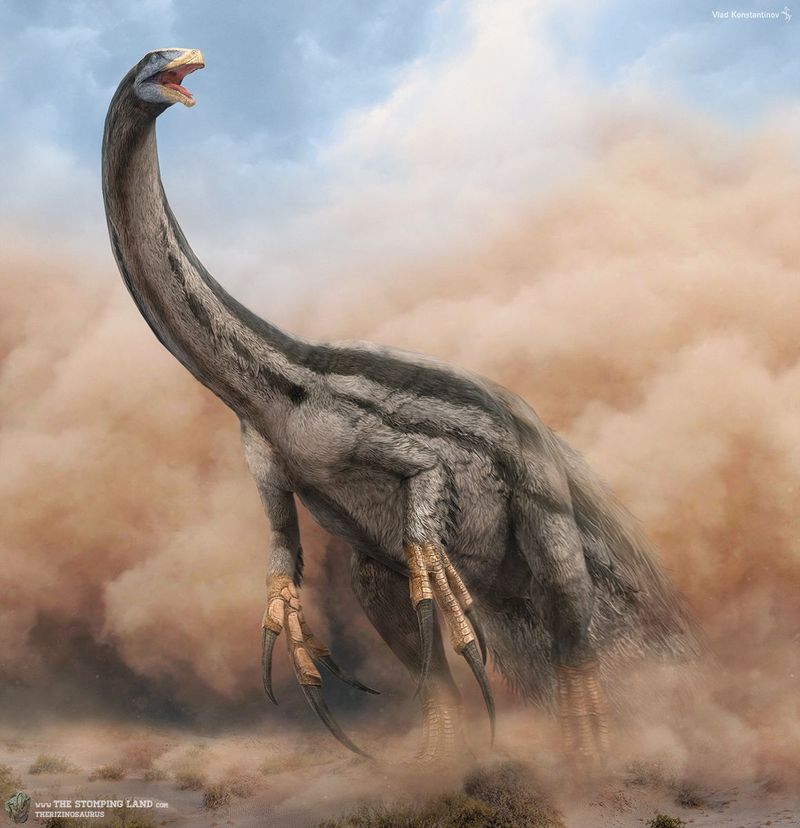
Though not much scarier than dinosaurs, Therizinosaurus was an unusual and intriguing creature. Known for its gigantic claws, which could reach up to 3 feet in length, it was unlike any other dinosaur of its time.
The purpose of its claws has been debated, with theories suggesting they were used for defense, foraging, or even attracting mates.
Therizinosaurus roamed the Cretaceous period, its towering presence and peculiar features making it a standout among its contemporaries.
Its unique appearance and enigmatic existence continue to be subjects of fascination and study, offering insights into the diversity and adaptability of ancient life forms.
8. Kaprosuchus
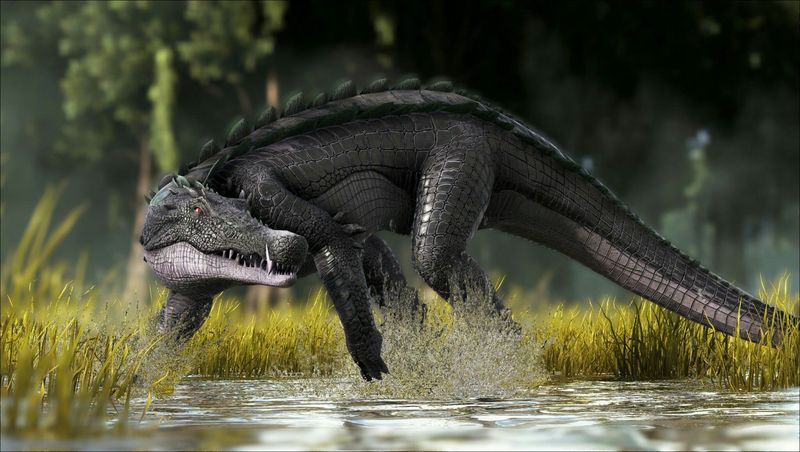
Kaprosuchus, often dubbed the “Boar Croc,” was a fearsome predator that roamed the Cretaceous period. Resembling a cross between a crocodile and a wild boar, it possessed long, sharp tusks and a powerful build, enabling it to ambush and overpower its prey.
This terrestrial predator was adapted to both land and water, making it a versatile hunter. Its robust jaws and strong limbs allowed it to tackle a variety of prey, from small animals to larger herbivores. The unique combination of features made Kaprosuchus an effective and terrifying predator.
Its fossil discovery has shed light on the diversity of prehistoric crocodilians and their adaptive strategies.
9. Sarcosuchus
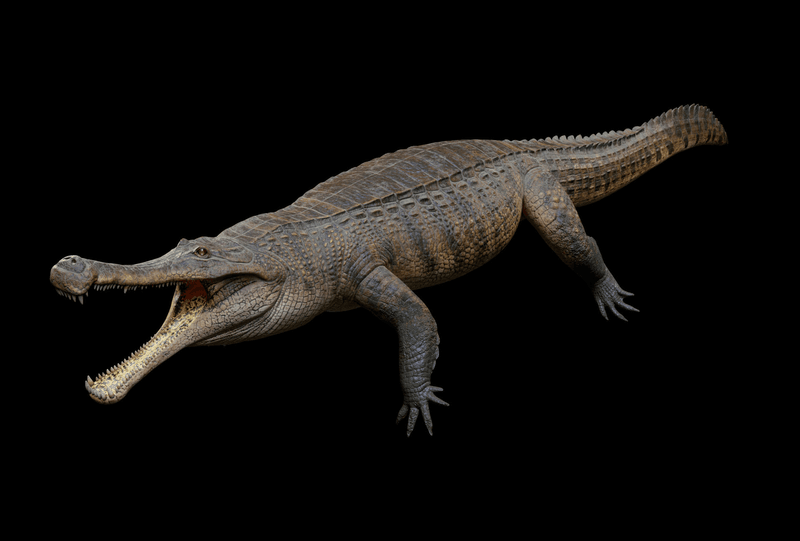
Sarcosuchus, affectionately known as “SuperCroc,” was a gigantic relative of modern crocodiles. Living during the Cretaceous period, it could grow up to 40 feet long and weigh as much as 8 tons, making it one of the largest crocodilians to have ever lived.
Its massive jaws were equipped with conical teeth, perfect for gripping and holding onto its prey. Sarcosuchus was a dominant predator in its environment, capable of taking down large dinosaurs and other contemporary creatures with ease.
The discovery of Sarcosuchus fossils has provided valuable insights into the evolution of crocodilians and their role in prehistoric ecosystems.

